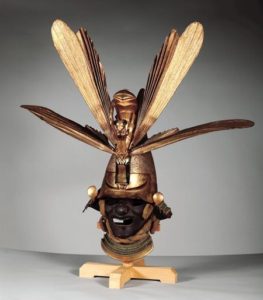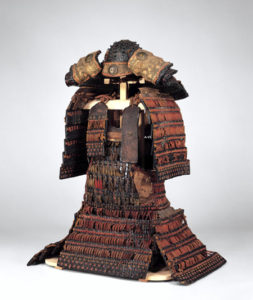
I never realized a sword could be so interesting. Correction: I never realized a sword blade could be so interesting. As a Westerner, it’s hard not to be initially nonplussed by the first few galleries of the Metropolitan Museum’s “Art of the Samurai” show in which glass cases display one seemingly identical curved steel blade after another.
You approach without expecting much. But close up, these objects — a seductive blend of art and deadly weapon — draw you in. Even if you’re not a fan of films like Kurosawa’s “Seven Samurai,” you can’t look at one of these gleaming blades without imagining how swiftly it might cleave a head from its shoulders, then wondering if it ever had. Soon you’re noticing its gentle curve, its clean bevels, the subtle etched designs and the calligraphy on the unpolished end where the handle will go. .
For me, the most intriguing feature was the tempering pattern, that soft, shimmering line, like a light frost, that is a byproduct of the sharpening and polishing process. Over centuries, this art also became a decorative art. Sometimes these lines, called hamon in Japanese, look like mountain ranges, or cloudbanks, or curling waves.
And, as I said, these are only the blades. Just to get this far, however, requires two teams of craftsmen, the swordsmiths and the polishers (a short film in the exhibition shows the process of a blade’s creation). The mountings and fittings are the job of yet another specialist group.
You’ll probably have these galleries to yourself. Visitors to this show tend to concentrate in the galleries beyond, where the colorful helmets and suits of armor are displayed. If swords were Zen-like objects, the “spirit of the Samurai,” as the exhibit tells you, then the armor and the helmets are more like the ego, serving as both self-protection and proud plumage.

This show has 214 works and is said to be the most comprehensive exhibit of Japanese arms and armor ever to take place in the world. Extremely valuable pieces – “National Treasures” — will only be exhibited for a few weeks at a time, and will rotate with others during the show’s 12-week run.
It’s interesting to see the parallels and differences between Japanese armor and its European counterpart. Instead of the steel exoskeletons worn by King Arthur’s knights, samurai wore coats, arm shields and hip skirts made of small enamel-coated metal plates, strung together and overlapped like fish scales. These suits were more flexible, and, because of the enamel coloring, much more decorative.
Later, when matchlock rifles were introduced into Japanese warfare, the samurai began wearing the heavier European-style breastplates. One has an impressive 10 bullet dents in it, though scholars believe these were made under test conditions as proof marks, to impress the buyer.
The primitive guns made battlefields very smoky, requiring commanders to have even taller crests on their helmets so that soldiers could see that their leader was still there. Some of these grew outlandishly high. One, a helmet with tall three-branch “deerhorn” crests belonged to the famous samurai, Honda Tadakatsu (1548-1610). A scroll from the Edo period shows him wearing it. He sits on a folding campstool, hands on spread knees, bright eyes looking eager for battle.

Helmets typically had protective mask-like faceplates, as well. These were cast in angry expressions designed to frighten opponents. Some had bristly moustaches and one has a furry head of hair, as if to better meld the wearer and the helmet into one visage. A 17th-Century helmet with a flaring back will tell you where the design for Darth Vader’s helmet came from.
With new pieces circulating into view every few weeks, this is a show where you can literally see new things on return visits. I want to get back to those sword blades. I had learned after looking at them that one called Okanehira is considered the greatest of all Japanese swords. I could have gone back for another look to see if I could discern its greatness, but as a novice, I didn’t yet feel worthy.

